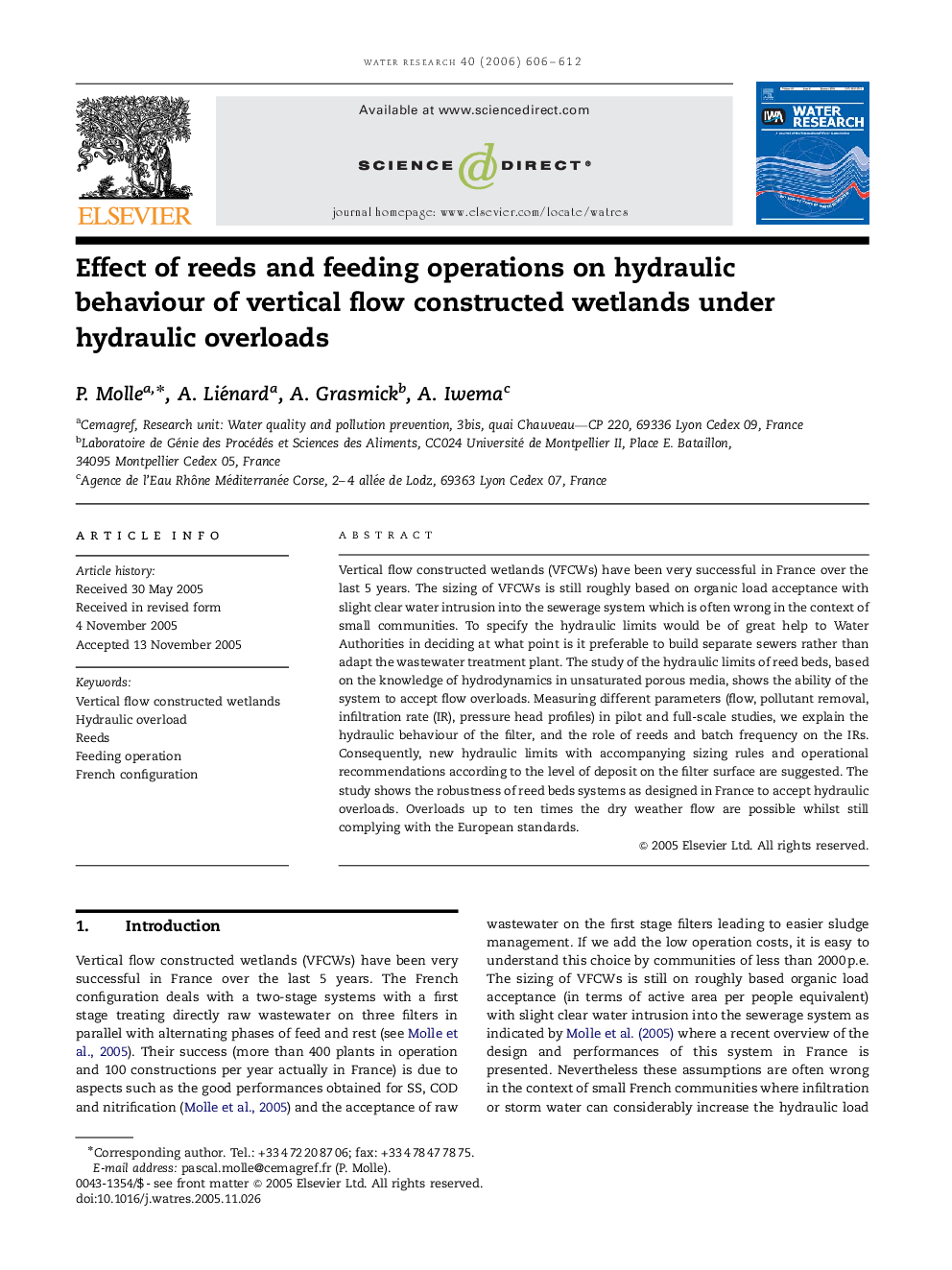| Article ID | Journal | Published Year | Pages | File Type |
|---|---|---|---|---|
| 4484691 | Water Research | 2006 | 7 Pages |
Vertical flow constructed wetlands (VFCWs) have been very successful in France over the last 5 years. The sizing of VFCWs is still roughly based on organic load acceptance with slight clear water intrusion into the sewerage system which is often wrong in the context of small communities. To specify the hydraulic limits would be of great help to Water Authorities in deciding at what point is it preferable to build separate sewers rather than adapt the wastewater treatment plant. The study of the hydraulic limits of reed beds, based on the knowledge of hydrodynamics in unsaturated porous media, shows the ability of the system to accept flow overloads. Measuring different parameters (flow, pollutant removal, infiltration rate (IR), pressure head profiles) in pilot and full-scale studies, we explain the hydraulic behaviour of the filter, and the role of reeds and batch frequency on the IRs. Consequently, new hydraulic limits with accompanying sizing rules and operational recommendations according to the level of deposit on the filter surface are suggested. The study shows the robustness of reed beds systems as designed in France to accept hydraulic overloads. Overloads up to ten times the dry weather flow are possible whilst still complying with the European standards.
